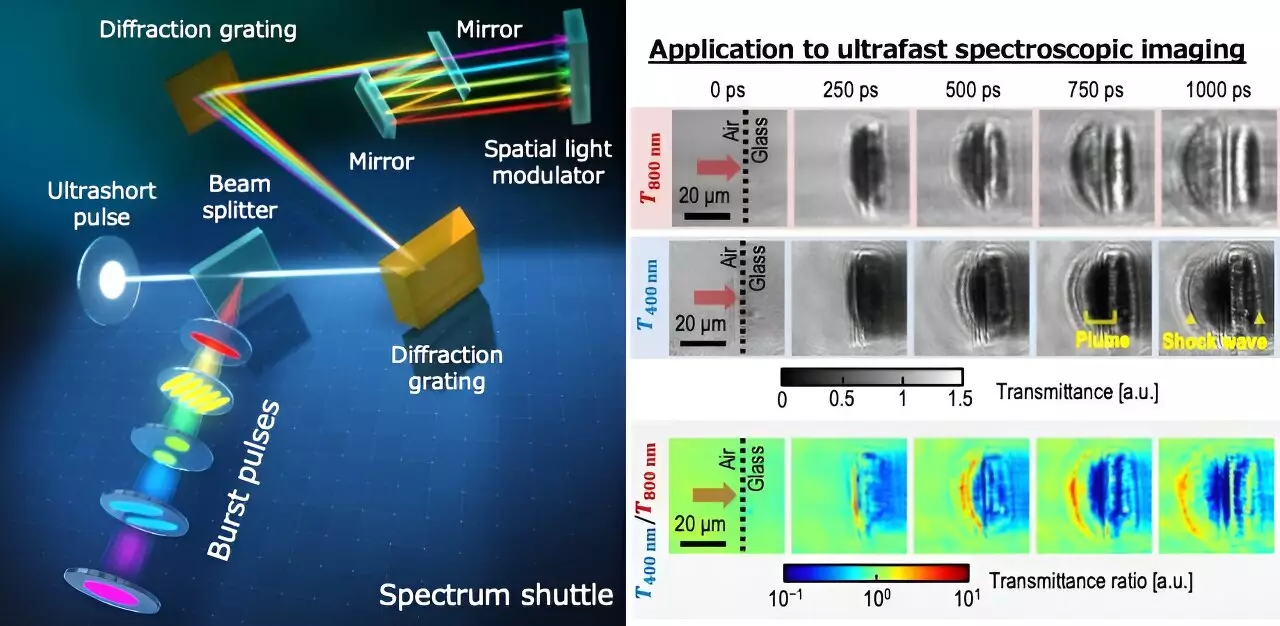The generation and manipulation of high-repetition pulses have proven to be invaluable across a wide range of applications, from high-speed photography to laser processing. One particular type of pulse, known as Gigahertz (GHz) burst pulses, holds significant promise in visualizing ultrafast phenomena and improving laser processing efficiency. However, existing methods for producing GHz burst pulses face several challenges, including low pulse energy throughput, limited tunability of pulse intervals, and complex system designs. Additionally, shaping the spatial profile of each burst pulse is hindered by the inadequate response of current spatial light modulators. To address these limitations, a research team from the University of Tokyo and Saitama University has developed an innovative optical technique called the “spectrum shuttle,” which allows for the simultaneous production and individual shaping of GHz burst pulses.
The spectrum shuttle technique involves dispersing an ultrashort pulse horizontally through diffraction gratings, which spatially separates the pulse into different wavelengths using parallel mirrors. These vertically aligned pulses then undergo individual spatial modulation using a spatial light modulator. As a result, spectrally separated GHz burst pulses with varied time delays are generated, each uniquely shaped in its spatial profile. This method has been reported to successfully produce GHz burst pulses with discretely varied wavelengths and temporal intervals, while also allowing for the shaping of spatial profiles, including position shifts and peak splitting. The versatility of this technique is further demonstrated in its application in ultrafast spectroscopic imaging, where it enables the simultaneous capture of dynamics in different wavelength bands. This breakthrough allows for the analysis of rapid, non-repetitive phenomena within subnanosecond to nanosecond timescales.
The spectrum shuttle technique has profound implications for scientific research and industrial applications. Its potential applications include uncovering unknown ultrafast phenomena, monitoring fast physical processes in industrial settings, and enhancing precision laser processing and laser therapy. Furthermore, the ability to shape GHz burst pulses individually opens up new possibilities for exploring various targets such as plasmas, metals, and cells. The compact design of the proposed method also enhances its portability, making it a versatile tool applicable across scientific research facilities and various industrial technology sectors.
The development of the spectrum shuttle technique offers a groundbreaking solution to the challenges faced in the generation and shaping of GHz burst pulses. With its ability to simultaneously produce and shape pulses, this innovative optical technique introduces a versatile tool for studying rapid phenomena and enhancing laser-based processes. The potential for scientific discoveries and technological innovations in industry and medicine is immense. The spectrum shuttle technique paves the way for advancing ultrafast imaging and opens new avenues for research and application in a wide range of fields.


Leave a Reply